A Day with the Spider Team in New Zealand
I spent the day with Bret Tobalski, Caitlin Shishido and Steve Lane, scientists from McMurdo Station who also are heading home. We spent the morning in Sumner, a seaside suburb of Christchurch which is home to a scenic beach. Bret, Caitlin and Steve have been in McMurdo Station with other members of their research team since October to better understand the sea spider. They are interested in learning how the sea spider gets oxygen and withstands stresses such as strong currents. They also are trying to understand why sea spiders get so big in cold waters (known as polar gigantism). You can learn more about their work here.
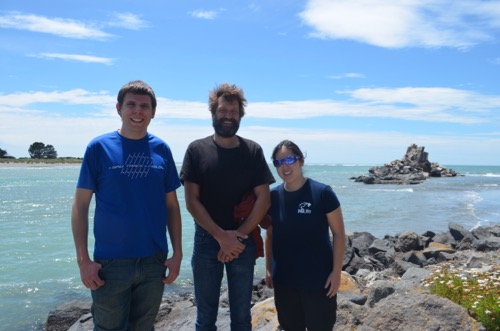
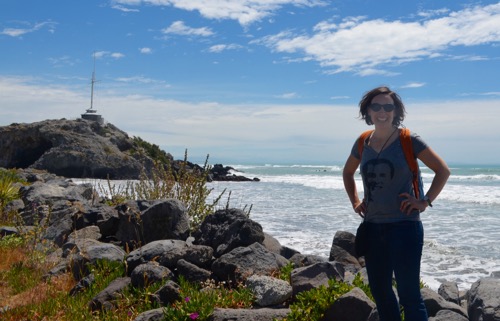
After spending time in the sun and sand, we headed to the downtown section of Christchurch. The holiday spirit is alive and well in the city center and it was fun to see Christmas decorations in summer weather.
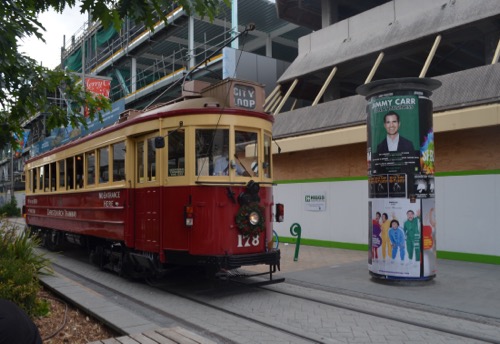
It was a fun day here in Christchurch, New Zealand, but I am eager to continue home to Pennsylvania.
Math Connection
My flight from Christchurch, New Zealand leaves at 7 a.m. (New Zealand time), and will arrive in State College, Pennsylvania at 11 p.m. (Eastern Standard Time). If New Zealand is 18 hours ahead of Pennsylvania, how many total hours will it take for me to get home?
Research in Antarctica Continues
Although I am heading home, my research team is still wrapping up their work at McMurdo Station. They are beginning to pack up their supplies and return equipment that has been borrowed from McMurdo Station. Over the past month, Team B518 has become my surrogate family. It feels strange not to spend my day with them and I feel grateful to have been a part of such a fun team.
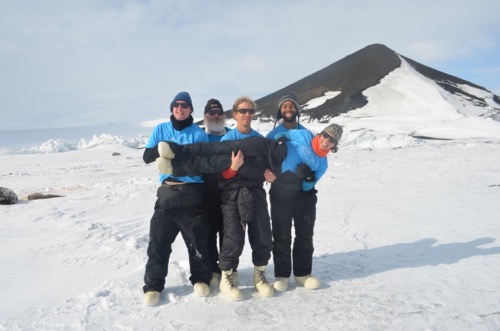
Meet Team B292
My expedition is ending, but there are more to follow! In a month, Alex Eilers will be joining a research team that studies the life cycle of Weddell Seals. I met Dr. Jennifer Burns, who leads the seal team, while I was at McMurdo Station. Over time I have become familiar with her work and am excited to learn more through Alex Eilers' journals.
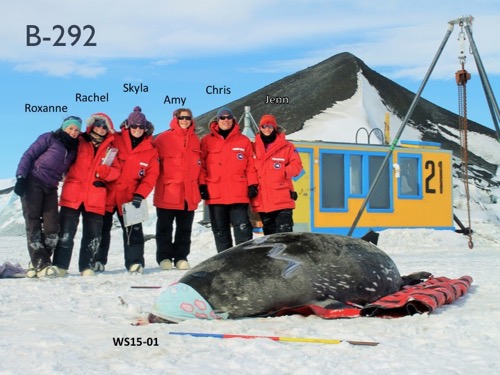
Dr. Burns and team B292 are researching factors that affect the life cycle of Weddell Seals. Specifically, they are looking at how summer activities, such as reproducing, foraging (looking for food) and molting (when pups lose their initial fur as they grow blubber), are linked to each other. They also are interested in better understanding how summer and winter activities affect the likelihood of pregnancy. Stay tuned to Alex Eilers' journals to learn more. In the meantime, I thought I would share some photos Team B292 took while conducting their research.
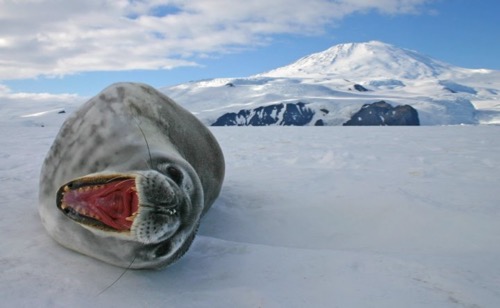

Meet Manu Buys and Team B267
Team B292 are not the only scientists studying Weddell Seals in Antarctica. While I was at McMurdo Station, I also met Manu Buys, a scientist who is studying how Weddell Seals are able to survive for a long time without oxygen. Manu has a background in medicine and works at Mass General Hospital in Boston. Understanding how Weddell Seals can tolerate low oxygen levels could lead to advancements that help humans with oxygen-related illnesses.
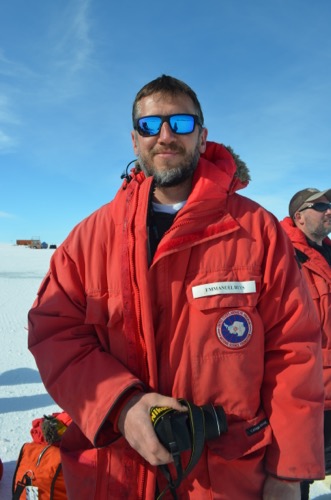
Manu is part of research team B267, which includes Allyson Hindle, Luis Huckstadt, and Kaitlin Allen, among other researchers. While Manu and his team were in Antarctica, they collected placentas and tissues of Weddell Seals. This material will be used to grow more tissue back in the U.S. The team will also work with other scientists to sequence the genome (the entire DNA code of the seal) and to extract RNA and proteins from the cells. By looking at the genetic codes of the seal, Team B267 hopes to uncover some of the blueprints that allow seals to survive with little oxygen. Manu has studied Weddell Seals in the past. By looking at their physiology (how the body parts of the seals function), he has discovered that Weddell Seals have an expandable spleen which can be filled up with oxygenated red blood cells and stored for later use. You can learn more about Manu's work by reading his blog. The team also has an instagram page and twitter account.
Ice Picture of the Day
Today's Ice POD is about the relationship between the Weddell Seal population and the distance of the ice shelf. Can you determine the relationship? To download a PowerPoint Slide, click here:25_icepod.pptx
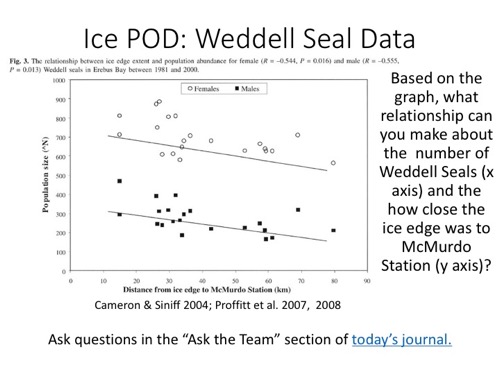
Brought to you by...
Today's journal is brought to you by A.J., from State College, Pennsylvania.
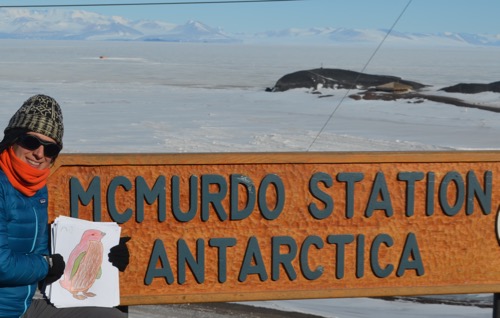
| Attachment | Size |
|---|---|
| 25_icepod.pptx105.4 KB | 105.4 KB |

Comments